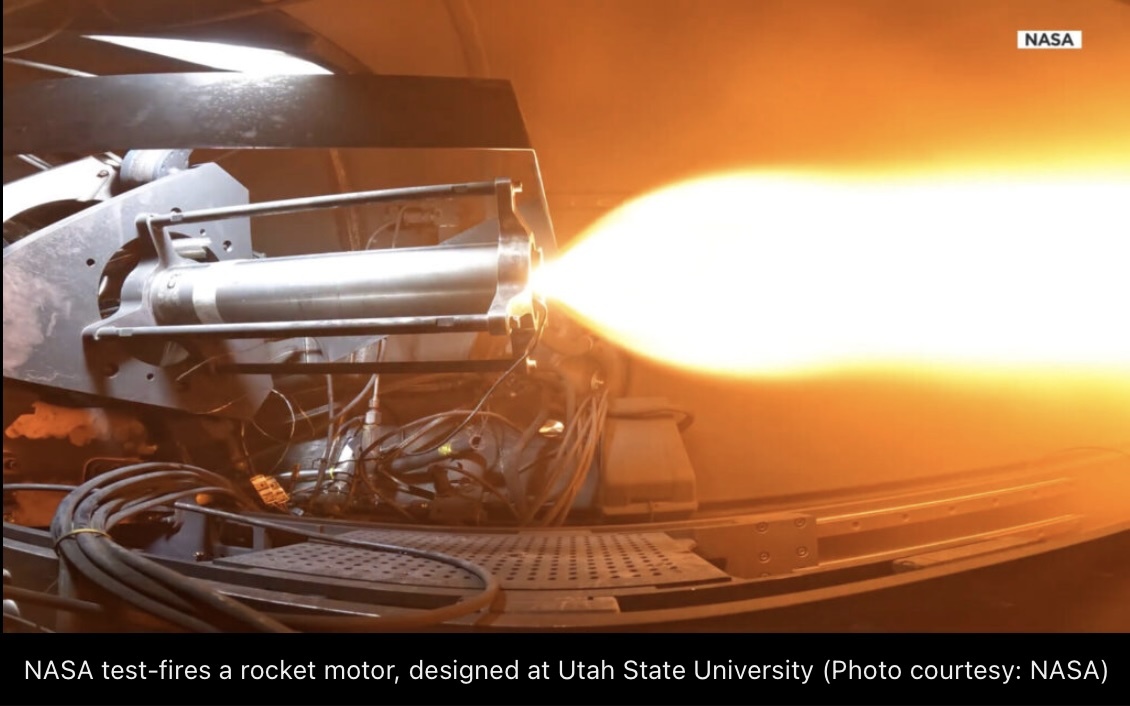14.06.2025

LOGAN — Researchers at Utah State University are working with NASA to develop a hybrid rocket motor that could help astronauts land on and take off from the moon in future Artemis missions.
The program is headed up by Dr. Stephen Whitmore, a retired NASA engineer who now heads up USU’s Propulsion Research Lab. The next-generation hybrid rocket motors use clean, non-toxic fuels, which are vastly different from what was used in the Apollo missions.
“This is essentially a non-explosive system,” Whitmore explained. “The only place the propellants mix in a volatile form is inside the thrust chamber itself.”
Read more: U. robotics team wins national competition at Kennedy Space Center
The rocket motor fires with nitrous oxide, which ignites the fuel that is essentially a type of cylindrical plastic that is made in a 3D printer. The combination of solid and liquid fuels allows for a rocket motor that can be fired, more precisely controlled, and then fired up again to blast off from the moon.
“Those can stay for an indefinite period of time and be able to successfully launch. And that’s really what’s important about it,” Whitmore said.
The hybrid rocket motors could also help astronauts perform a more controlled landing. Whitmore said Artemis astronauts will be landing in a different area of the moon than the earlier Apollo missions, where the sand is a much finer dust material, which is also toxic because of long-term exposure to radiation from the sun.
NASA will closely study how much the rocket motors could impact the dust and how to minimize how much of it astronauts come in contact with.
“If you kick up all this dust and it gets spread everywhere, all the charged particles can stick to electronics on the rocket, they can stick to the clothing on the astronauts’ suits, and they can bring it back inside,” Ryan Thibaudeau, a Ph.D student, explained. “That can really be a safety issue.”
NASA recently tested the rocket motor, designed at USU, at its Marshall Space Flight Center in Huntsville, Alabama, firing it up more than 30 times. But because the motor uses non-toxic and more easily controlled fuels, researchers at USU can also continue to test-fire it on campus as they did while KSL watched on Wednesday.
While the team of researchers was aiming for about 250 pounds of thrust—a level that would prove to be quite strong on the moon, where gravity is about a quarter of what it is on Earth—the test-firing on Tuesday came in at around 240 pounds, which the team was still happy with.
“We got exactly what we wanted today,” Whitmore said. “We showed that we wanted to move our thrust level. We made a few changes, and we did exactly that.”
Quelle: KSL TV5
